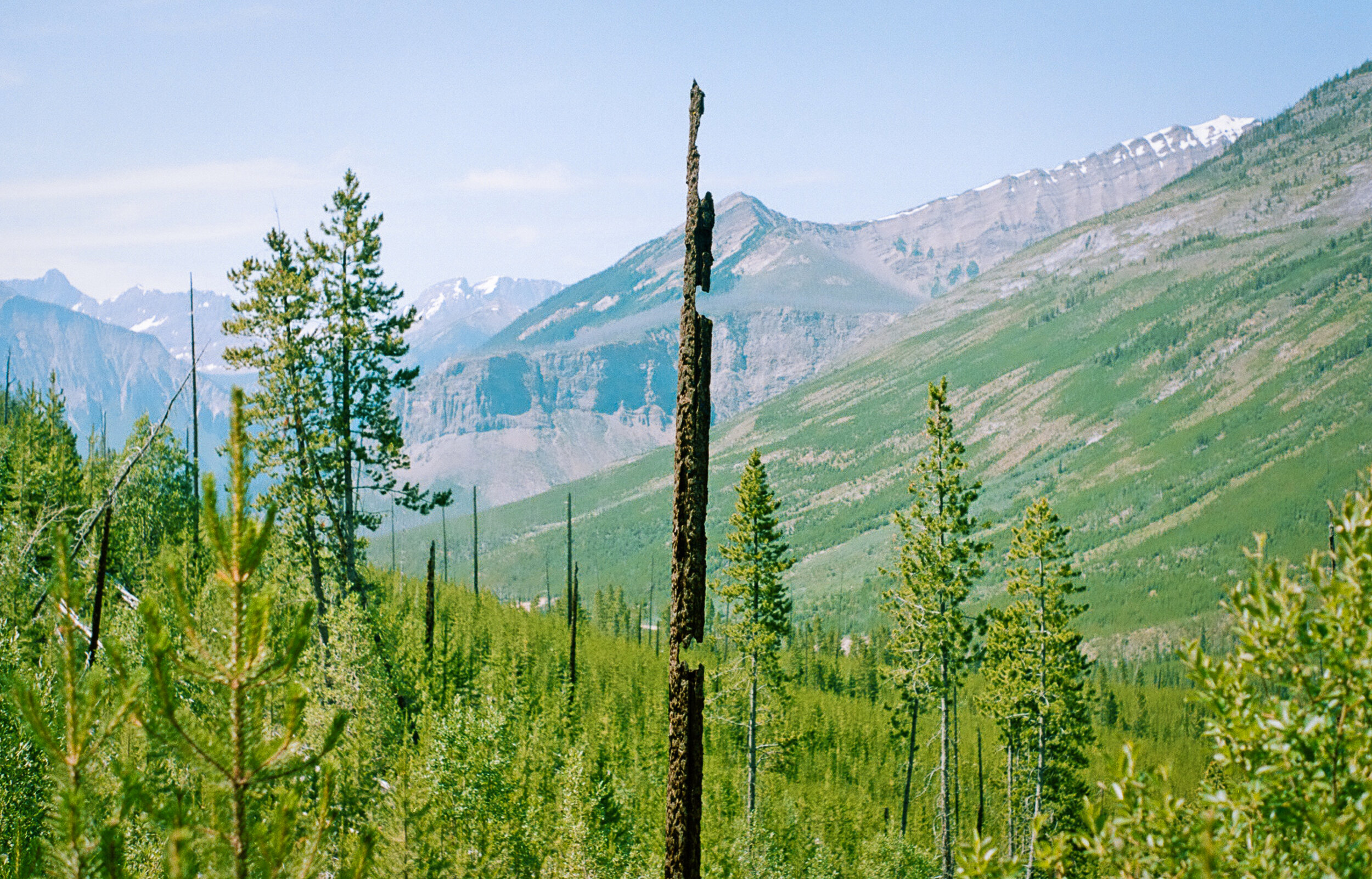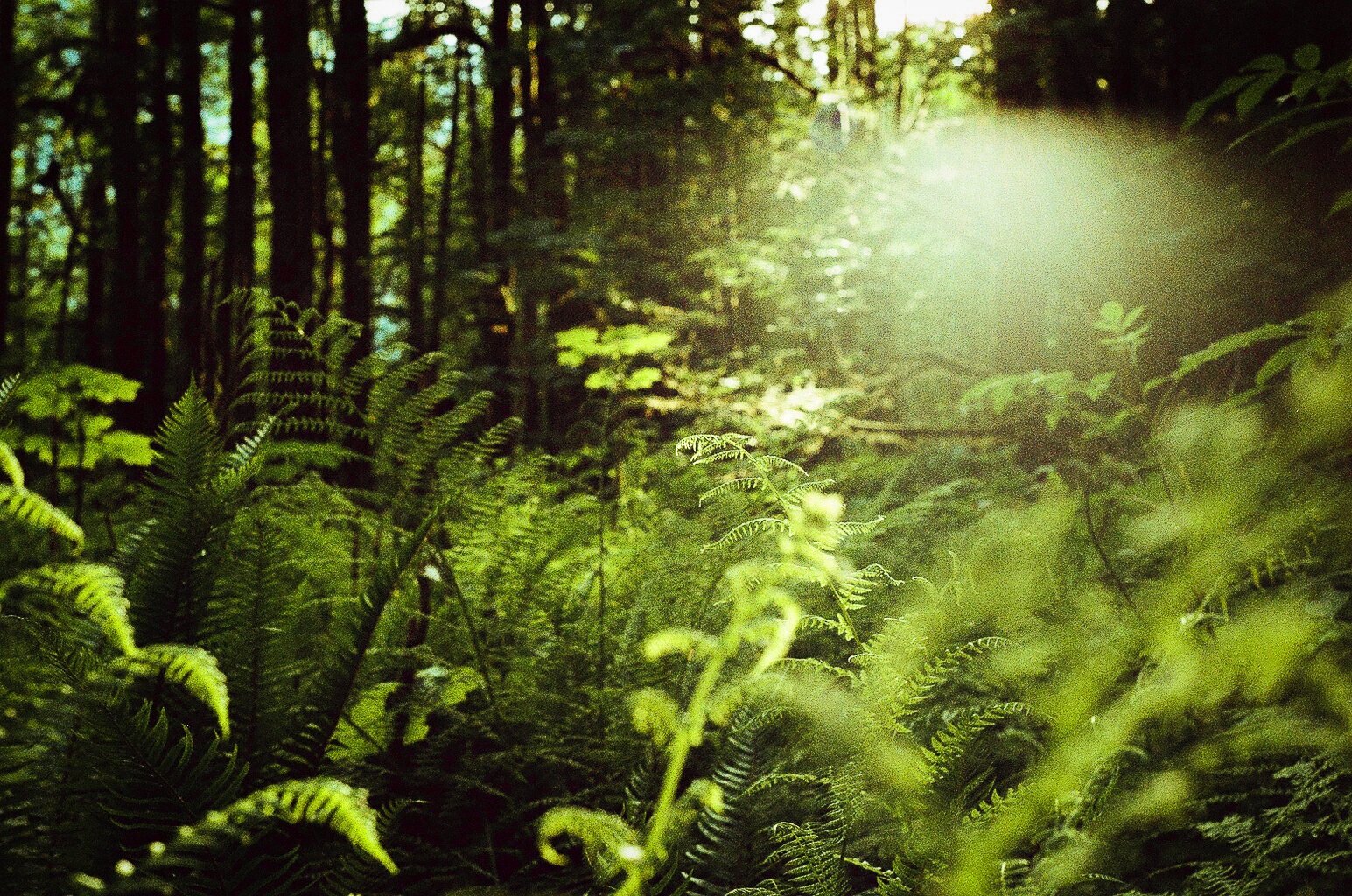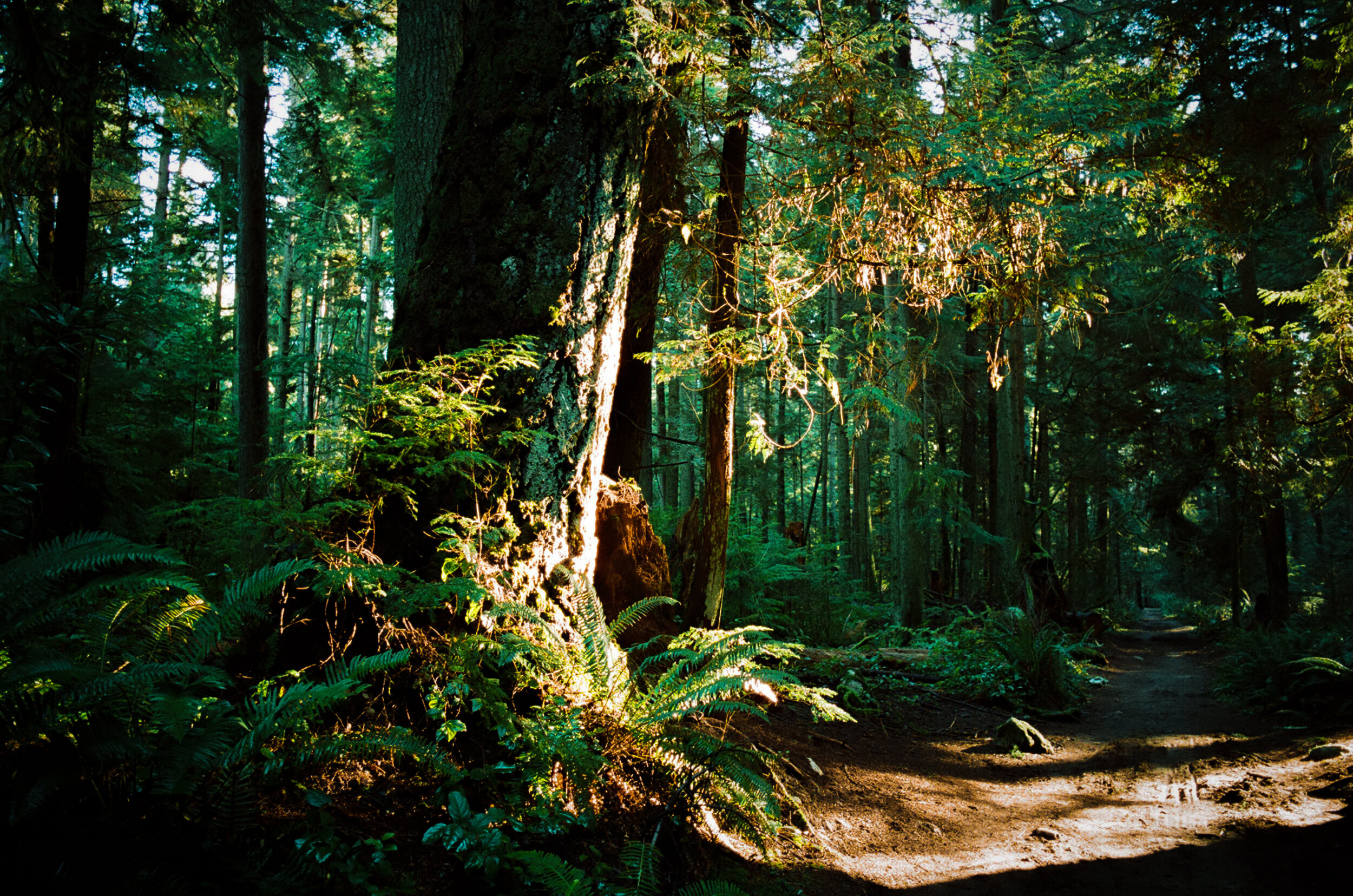British Columbia Old-Growth: Redefining Our Relationship with Forests
Old-Growth Forests in British Columbia play an important role in the Earth’s carbon-storage capacity. However, exploitation of these forests has led to many of these trees being replaced by second-growth monocultures. Paulina explores why it is vital that we conserve these age-old forests.
Forest in Greater Vancouver, British Columbia. Photographed by Elis Fowler.
The diverse topography of British Columbia provides for rich old-growth forests still vastly misunderstood by Western Science. Within its mesmerizing diversity entails systems of complexity often unnoticeable to the human eye, though it supports the resilience of life that encompasses ours. Parallel to traditional resource extraction across the world, increasing technological boom in the past century has led this once ever-exploitable resource to become rarer with each passing day. The effects of its loss will have impacts beyond the landscape of British Columbia alone, contributing to the extensive harm of air and water quality, as well as its contribution to global climate change. What old-growth has already been lost, and the rate at which the most productive old forests continue to be harvested in British Columbia has led to urgency in policy and management changes demanded by many public citizens and scientists alike. Today, we face a clash between the demand for timber harvest and the necessity for resource conservation to sustain life. But can we build a sustainable future for forests and old-growth alike that encompasses both of these values? The complexities and resilience explored within British Columbia’s old-growth forests may hold the answer to this issue within itself.
Illustration by Aimee Lee.
Forest health in British Columbia isn’t solely affected by its harvest, but further by the re-planting mechanisms the logging industry employs. Harvested old-growth is often replaced by homogenous tree communities of a fast-growing lodgepole pine monoculture throughout British Columbia. In this traditional practice, the difference between a reforested plot and a natural aged forest is stark. Lacking shrubbery or smaller trees beneath the forest canopy that provide structural diversity and make way for thriving wildlife, the stand, a community or grouping of trees, differs largely from its natural counterparts. The reduction in species richness makes replanted tree communities susceptible to collapse in the face of disturbance, observed already in the Mountain Pine Beetle outbreaks that have devastated so much of British Columbia’s forests. Young Alder trees and broad-leaved birches which provide necessary nutrients and significant protective roles to the ecosystem are also absent. What’s more, this replanted stand will likely never reach the age or abilities of natural old-growth in British Columbia before it is once again harvested for a second, or third, timber yield. This cycle continuously damages the ecosystem, reducing productivity and posing a problem for all who find value, whether it be tangible or intangible, in its forested landscapes.
In contrast to these cleared landscapes, an unparalleled ecosystem diversity and health is observed within the remaining old-growth ecosystems. Dominated by wooden giants of many kinds, vast systems of fungi, mosses, and fruit-bearing plants of all sizes provide for life as large as the mystic spirit bear. Newfound research has revealed never before understood relationships between ecosystem health and tree species diversity in old-growth forests. Under the Mother Tree Project, Dr. Suzanne Simard’s work at the University of British Columbia reveals how interactions among various species and ages in a forest community are more important to an ecosystem than we had ever understood before. Her findings show us that trees remarkably communicate with each other and even share resources through mycorrhizal fungi networks in order to support the health of the entire community. In this way, inhabitants of a forest, even competitors, support each other to create the ecosystems we see. The diversity of species, observed in natural forests around the world, enhances both the resilience and the productivity of a forest ecosystem considerably. The biodiverse characteristics of old-growth systems specifically show the ability to capture and store carbon at a rate vital to combating climate change.
Meares Island, British Columbia. Photographed by Elis Fowler.
The relationships studied in natural old-growth present valuable lessons for how our own reforestation practices can conserve the complexity that drives forest health and productivity. The replacement of old-growth forests with young uniform stands is central to British Columbia’s deforestation issue. The simplification of replacement stands has shown us that the conservation of all of British Columbia’s forests is at stake if logging practices continue to homogenize our naturally resilient old-growth into second-growth monocultures. At the heart of this issue, old-growth poses dual solutions: how to better harvest sustainably, and how to focus our conservation efforts to support our best hero against climate change. Research around the world has indicated that greater forest retention can play an important role in preserving this biodiversity and carbon-storing abilities. By emulating the complex interactions among species that so effectively support thriving old-growth in post-harvesting practices, and preserving these relationships in remaining old-growth itself, a productive future for British Columbia’s forests is possible. Growth in the popularity of some of these modern practices has already begun to take place across the province. Practices such as replanting a natural diversity of tree species, and preserving larger patches of the original old-growth will allow the resilience of valuable old-growth to persist for years to come.
In facing a climate crisis in conjunction with old-growth loss, the aspects of diversity illustrated in the old-growth ecosystem must be recreated after harvest in order to retain forest health. Retaining existing old-growth forests will also be critical to preserving the natural carbon storages they provide. Current provincial policy has been estimated to provide for protection of less than 10% of old forest ecosystems, deemed a very risky standard to preserve the valuable ecosystem services old-growth provides. This risk warrants urgent changes in provincial protections for old-growth, especially those that are most productive and are of greatest demand to harvest. If we can protect these natural portions and strive to manage our harvested forests through the lens of old-growth complexity by using its characteristics as a reference for post-harvest reforestation, we can be better resilient to ongoing anthropogenic change. Furthermore, we can sustain timber harvest yields while conserving the productivity of harvested landscapes.




With this shift in practices and preservation, we have the ability to restore our relationship with the forest ecosystem, benefiting people and nature in a sustainable way. The conflict between resource development and health of the natural world has long persisted as a grave issue through the western lens of these traditional forest practices. But as many foresters now explore today, the complexities within old-growth reveals untold resilience of the forest ecosystem and provide ample hope towards a sustainable relationship between us and our ever-desired timber resource. If we can harvest, and conserve, according to what the old-growth has shown us it requires, we can maintain a relationship of coexistence with the forests here in British Columbia. The old-growth of British Columbia has long been a treasure to many, let’s learn to listen to it and extend its resilience within our own livelihoods.
Thank you Elis Fowler for showcasing his photography of British Columbian old-growth forests. You can find more of his work on Instagram @elisfowler.
Thank you Aimee Lee for her illustration.You can find more of her work on Instagram @aillustration.
Paulina Chalmers
Paulina Chalmers is a BSc. student in the Faculty of Forestry at the University of British Columbia. She has a passion for environmental stewardship, and specific interests in combining her conservation science background with socio-economic knowledge to produce sustainable solutions for natural resource management in the future. Paulina hopes to conduct research in the fields of Forest Science and Ecology following her undergraduate degree.



